Klein Tools NCVT-5A Bruksanvisning
Klein Tools
måleinstrument
NCVT-5A
Les nedenfor 📖 manual på norsk for Klein Tools NCVT-5A (5 sider) i kategorien måleinstrument. Denne guiden var nyttig for 16 personer og ble vurdert med 4.5 stjerner i gjennomsnitt av 8.5 brukere
Side 1/5

1
ENGLISH
ESPAÑOL
FRANÇAIS
DURABILITY / DURABILIDAD / DURABILITÉ
Drop Protection
Protección ante caídas
Protection contre les chutes
9.8 ft.
(3 m)
Safety Rating
Clasificación de seguridad
Cote de sécurité
CAT IV
1000V
Symbols on tester / Símbolos del probador / Symboles sur le testeur
Warning – Risk of electric shock / Advertencia: riesgo de choque eléctrico / Avertissement – Risque
d'électrocution
Risk of danger. It is important that users of this tester read, understand, and follow all Important information:
warnings, cautions, safety information, and instructions in this manual before operating or servicing this tester.
Failure to follow instructions could result in death or serious injury.
Riesgo de peligro. Es importante que el usuario de este probador lea, Información importante:
comprenda y respete todas las advertencias, precauciones, instrucciones e información de seguridad
incluidas en este manual, antes de poner en funcionamiento el probador o de realizarle servicios de
mantenimiento. No seguir estas instrucciones puede dar lugar a lesiones graves o mortales.
Risque de danger. Il est important que les utilisateurs de ce testeur lisent, Information importante:
comprennent et suivent tous les avertissements, mises en garde, information de sécurité et instructions
donnés dans le présent guide avant de faire fonctionner ou de réparer ce testeur. Le non-respect pourrait
entraîner des blessures graves, voire la mort.
Double insulated / Doble aislamiento / Double isolation
Read instructions / Lea las instrucciones / Lire les instructions
This product has been independently tested by Intertek and meets applicable published standards.
Este producto p1-ha sido probado de manera independiente por Intertek y cumple con las normas
publicadas vigentes.
Ce produit a été testé de manière indépendante par Intertek et répond aux exigences des normes applicables.
CAT
IV
For measurements performed at the source of low-voltage installation and outside lines.
Para mediciones realizadas en la fuente de la instalación de bajo voltaje y líneas externas.
Pour des mesures prises à la source d’une installation à faible tension et des lignes extérieures.
NCVT-5A
FIG. 1
INSTRUCTIONS – Dual-range Non-Contact Voltage Tester with Laser Pointer (English: page 2)
INSTRUCCIONES – Probador de voltaje sin contacto de rango dual con puntero láser (Español: página 3)
INSTRUCTIONS – Testeur de tension sans contact à double plage avec pointeur laser (Français : page 4)
6
4
5
1
2
7
9
8
10
3
1.
NCV Power On/Off Button
2.
Laser Power On/Off Button
3.
Power On/Mode LEDs
4.
Voltage Detection LEDs (Inside Tip)
5.
Non-Contact Tip
6.
Laser Aperture
7.
Pocket Clip
8.
O-ring Seal
9.
Battery Cap
10.
2x AAA Batteries (Included)
NOTE: There are no user-serviceable parts inside tester.
1.
Botón de encendido y apagado "NCV"
2.
Botón de encendido y apagado del láser
3.
LED de encendido/modo
4.
LED de detección de voltaje (en el interior de la punta)
5.
Punta para detección y medición sin contacto
6.
Apertura del láser
7.
Clip de bolsillo
8.
Junta tórica
9.
Tapa del compartimento de baterías
10.
2baterías AAA (incluidas)
NOTA: El probador no contiene en su interior piezas que el
usuario pueda reparar.
1.
Bouton marche/arrêt NCV (test de tension sans contact)
2.
Bouton marche/arrêt du pointeur laser
3.
VoyantsDEL de marche/mode
4.
VoyantsDEL de détection de tension (dans la pointe)
5.
Pointe sans contact
6.
Ouverture du laser
7.
Agrafe pour poche
8.
Joint torique
9.
Couvercle de piles
10.
2pilesAAA (comprises)
REMARQUE: Ce testeur ne contient aucune pièce réparable
par l’utilisateur.
• Detects AC voltage from 12 to 1000V with visual & audible indicators
• Two detection ranges: 70 to 1000V and 12 to 1000V
• Bright integrated laser pointer
• Detecta voltaje CA de 12V a 1000V mediante indicadores visuales y audibles
• Dos rangos de detección: 70V a 1000V y 12V a 1000V
• Puntero láser integrado, con haz de luz brillante
• Détecte la présence d’une tension allant de 12 à 1000Vc.a. et la signale au moyen
d’indicateurs visuels et sonores
• Deux plages de détection: 70 à 1000V et 12 à 1000V
• Pointeur laser lumineux intégré
Produkspesifikasjoner
| Merke: | Klein Tools |
| Kategori: | måleinstrument |
| Modell: | NCVT-5A |
| Vekt: | 43 g |
| Bredde: | 24 mm |
| Dybde: | 152 mm |
| Høyde: | 29 mm |
| Antall støttede batterier: | 2 |
| Batteri inkludert: | Ja |
| AC-spenningsområde: | 12 - 1000 V |
| Dekselfarge: | Gult |
Trenger du hjelp?
Hvis du trenger hjelp med Klein Tools NCVT-5A still et spørsmål nedenfor, og andre brukere vil svare deg
måleinstrument Klein Tools Manualer
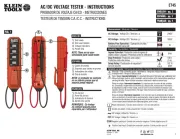
3 August 2025
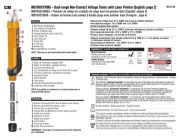
3 August 2025
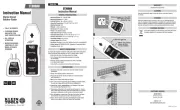
3 August 2025
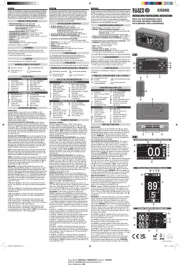
3 August 2025
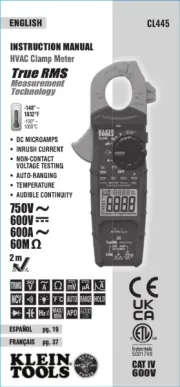
3 August 2025
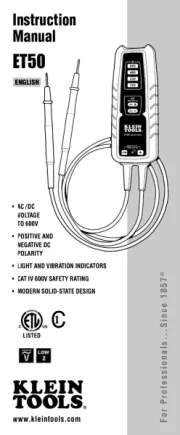
3 August 2025
måleinstrument Manualer
- Ideal
- Parkside
- Gossen Metrawatt
- Owon
- IFM
- AS - Schwabe
- Draper
- Toa
- SRS
- Doyon
- Tripp Lite
- Extech
- Chauvin Arnoux
- PCE Instruments
- Circutor
Nyeste måleinstrument Manualer
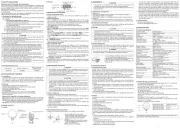
21 Oktober 2025
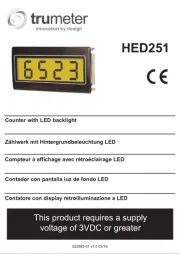
21 Oktober 2025
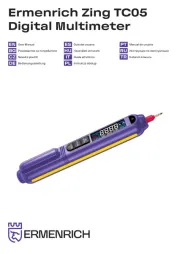
20 Oktober 2025
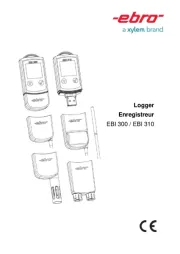
19 Oktober 2025
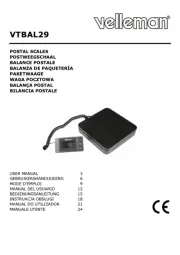
16 Oktober 2025
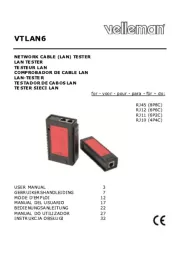
16 Oktober 2025
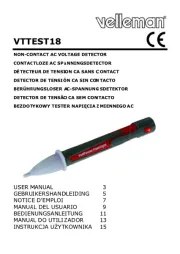
15 Oktober 2025
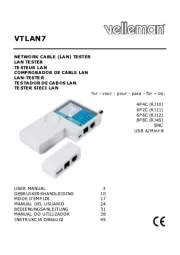
15 Oktober 2025
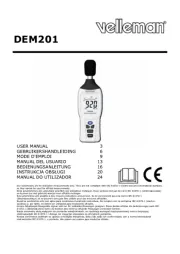
15 Oktober 2025
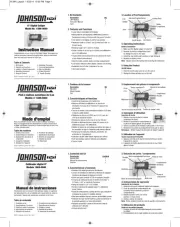
13 Oktober 2025